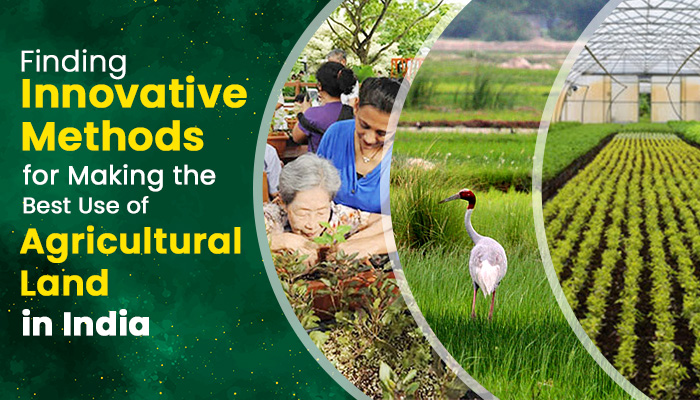Agriculture needs technology and modernization. Let’s examine recent changes that could revolutionize the agricultural sector. India’s GDP is largely comprised of agricultural and related services. The development of equipment and tools has boosted agriculture. Tractors and other pieces of machinery have replaced the use of animals in farming.
Harvesting crops is now a more time-consuming manual process. The agricultural sector has also benefited greatly from technological advancements. The government has officially recognized the sector’s digital progress, opening the door for digital start-ups to enter and completely transform the sector.
There is still a need to apply new technologies and modernize agriculture. Let’s take a look at a few innovations that could drastically alter the agricultural industry:
1. Aquaponics

Two technologies working together could make sustainable food production possible even in urban areas. This innovative system includes fish farming and hydroponics. Population growth is expected to make cities 70% of the world by 2050. The world needs a new farming strategy now. Aquaponics is one. The self-sustaining system reduces consumption while recycling water and plant nutrients.
2. 3D Chemical Printing

If adopted, 3D printers could dramatically alter the agricultural landscape of India. Farmers can produce herbicides, pesticides, and veterinary medicines with this technology. It takes no extra time to make due to its portability. Three essential components are required for 3D printing: a computer program, a 3D printer, and chemical inks. Such technology has yet to be available in India. This inexpensive technology could transform farming in India, but only if it makes it there.
3. Internet of Things in Smart Farming

The increasing connectivity of devices has literally made precise automation and control over irrigation, fertilizer input, and pesticide spraying possible; all it takes to achieve complete control over every aspect of crop production is to connect all these features to a single device like a smartphone and put them in a greenhouse.
4. Farm Management Software

Today, farm management software is an indispensable resource. Tools that enhance traceability and help keep perfect records of pesticide spraying and even things like weather forecasts will not only help farmers to provide excellent documents to the authorities but will also help them to take effective measures to safeguard their crops during sudden weather changes, which is especially important now that western countries are increasing food safety regulations.
5. Solar-Powered Pest Control System for Small Agricultural Fields

This new agricultural innovation utilizes solar power to address potential electrical problems faced by farmers while applying pesticides to their fields. The researchers at IIT Kharagpur are responsible for this breakthrough.
6. Digital Imaging using Smartphones

A new inexpensive hyperspectral imaging sensor for smartphones may make it easy to identify agricultural illnesses early and drastically reduce crop losses in developing countries. Growers can use this technology to scan their plants for signs of disease, compare those results to databases of known or suspected diseases, and then take whatever necessary preventative measures. Scalers can add newly discovered diseases to the database, making it a more comprehensive early warning system over time.
7. Sentinel Plants

In agricultural systems, sentinel (signal plants) are early warning systems for biotic or abiotic stress. Changes in leaf color are one of the earliest indicators of crop stress they provide. These plants are especially adept at detecting the onset of new diseases and pests, as well as nutrient deficiencies and shifts in soil composition.
8. Crop Irrigation Systems can now be Monitored and Controlled using a Smartphone

Mobile technologies have allowed for monitoring and controlling crop irrigation systems, thanks to advancements in the interconnectivity of devices. Today’s technology lets farmers manage their irrigation systems without visiting each field. Soil moisture sensors measure soil water at various depths.
9. Agriculture App for Farmers: AgroStar (Kisan Helpline)

It stopped developing two years ago. This is a major step towards digitalizing India’s agricultural sector. Agriculture employs 58% of Indians, but many farmers lack the knowledge to plant and care for their crops. As a countermeasure, Agro Star connects farmers with agricultural and medical experts. Farmer networking and information sharing is great.
Conclusion
The Indian agriculture industry saved the economy during the COVID-19 pandemic. The Indian agribusiness sector, like any other, must adapt to stay competitive; the innovations as mentioned above represent the cutting edge of agricultural technology that farmers will soon use.



